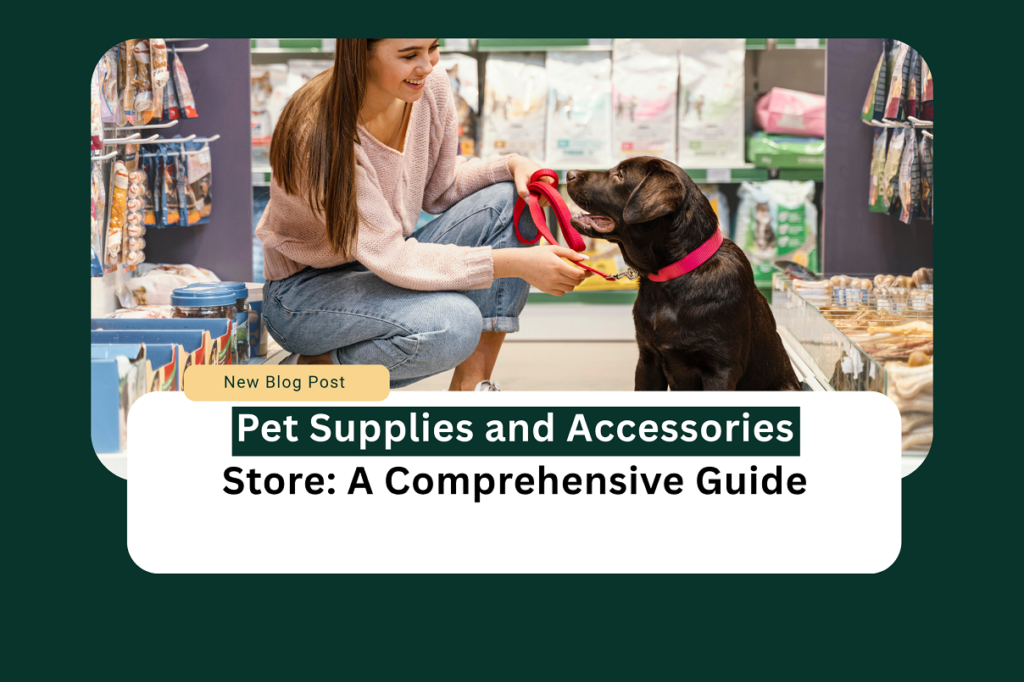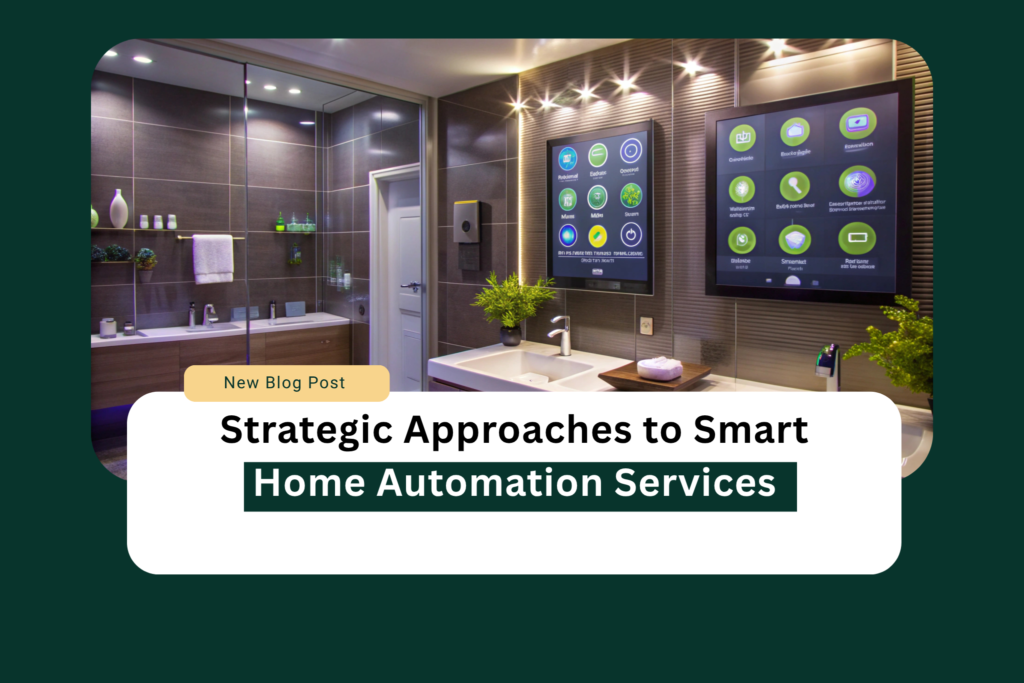Introduction
Those who want to convert their love for pets into business success through a pet supplies and accessories store will find this venture highly gratifying. The pet supplies industry maintains strong market performance because Americans spent a record $136.8 billion on their pets in 2022 as reported by the American Pet Products Association (APPA). The complete guide presents all the necessary information needed to establish a thriving pet supplies and accessories store that covers market research through inventory selection and additional aspects.
Understanding the Pet Supplies Market
Before starting any business in pet supplies it becomes essential to study the present market conditions. Pet industry growth remains steady because the 2023-2024 APPA National Pet Owners Survey shows that pets exist in 70% of U.S. households. Pet supplies and accessories have a sizable market because 90.5 million homes in the United States maintain animal companions.
The pet supplies sector now focuses on premium and specialized items for pet products. Pet owners today treat their pets as part of their family which stimulates the market for premium pet foods, sustainable toys, fashionable accessories and advanced care products. The premiumization trend creates distinct opportunities for new pet supply store owners to provide different products than big-box retailers.
The Development of Your Pet Supplies Store Business Plan
A detailed business plan stands as the essential element for creating a successful pet supplies and accessories store. Detailed market analysis combined with competitive positioning startup and operational costs revenue projections and marketing strategies must be present in your plan. Small Business Economics journal has documented that companies with formal planning systems grow 30% better than unorganized businesses.
Your pet supplies store concept development needs to decide between selling general merchandise or focusing on specific niche areas such as organic pet foods, luxury accessories or exotic pet supplies. The distinct business plans demand various inventory needs while operating in unique competitive markets that produce different profit margins. The business plan must show exactly how your pet supplies business stands apart from other competitors in this market sector.
Location and Store Layout Considerations
A pet supplies and accessories store requires a strategic selection of its operating location. The best locations for such stores should be shopping centers that house complementary businesses consisting of veterinary clinics and grooming salons along with high-end grocery stores. The CoStar Group shows that pet retail stores thrive in areas where residents belong to middle to upper-income groups and frequently have pets.
Your business layout needs to accommodate both the shopping needs of human consumers and pets. Customers who bring their dogs can use wide aisles and strategic product placement throughout the store encourages shoppers to make spontaneous purchases. Successful pet supply stores organize their floor plan with 60% dedicated to consumable items (food and treats) while durable items (toys, beds, carriers) take up 40% of the space per research by the National Retail Federation on retail space optimization.
Sourcing Products for Your Pet Supplies Inventory
Pet supplies wholesalers and distributors should be your priority when building relationships because it ensures you maintain a consistent inventory. The majority of new retail owners establish partnerships with five to ten main suppliers to obtain both favorable prices and constant product availability. The pet supplies market has seen rapid growth in natural/organic products, interactive toys, tech-enabled accessories, and eco-friendly supplies based on GfK retail tracking data.
Your pet supplies inventory should include popular established brands next to distinctive products that make your store stand out. Pet Industry Distributors Association reports that stores that sell both exclusive and locally-made pet accessories achieve 15-20% higher profit margins on these items compared to mass-market products based on industry data.
Marketing Your Pet Supplies and Accessories Store
Your new pet supplies and accessories store requires effective marketing strategies to draw customers. Your marketing approach should combine both online and physical channels. Pet businesses benefit significantly from social media marketing since Sprout Social reports that pet product content achieves the highest levels of engagement on Instagram and TikTok during the 2023 industry benchmark period.
A loyalty program for your pet supplies store customers would be a great addition to your business model. Bond Brand Loyalty reports that brand loyalty program participants increase their spending by 18% versus customers who do not participate in the program. Pet supply packaged stores experience the greatest program participation by offering cumulative discounts to customers who buy pet food and litter regularly.
Building Community Around Your Pet Supplies Store
Pet supplies and accessories stores that succeed in the market develop into places where pet owners can gather as community hubs. Your store should organize educational workshops and adoption events or pet photography sessions to attract customers to your store. A Packaged Facts survey found that pet owners prefer to shop at retailers that support animal welfare or sponsor community activities because they do so.
Your pet supplies business can benefit from cross-promotional activities through working with veterinarians, trainers, and rescue organizations operating within your local area. Your store will establish authority among local pet community members through these strategic partnerships, which in turn generate referral traffic.
Managing Finances and Inventory
Pet supply stores require effective inventory management to succeed. Pet retail businesses typically turn their inventory six to eight times per year, with consumables rotating more rapidly than durable items. Using point-of-sale technology to track inventory will optimize your stock levels and reduce product waste due to expiration dates.
The establishment of a medium-sized pet supplies and accessories store requires initial costs between $100,000 and $300,000 based on location choices, inventory choices, and construction requirements. According to the Pet Industry Joint Advisory Council, most new pet supply retailers achieve profitability within 18-24 months of opening.
Conclusion
Starting a pet supplies and accessories store offers entrepreneurs the opportunity to combine their passion for animals with a growing market opportunity. By thoroughly researching the pet supplies industry, developing a detailed business plan, selecting the right location, curating innovative products, and implementing effective marketing strategies, you can build a thriving business that serves the needs of pet owners in your community.
We’d love to hear about your experiences starting or operating a pet supplies store! Please share your thoughts in the comments below and consider sharing this article on your social media accounts to help other aspiring pet entrepreneurs.
FAQs
Q1: What amount of capital is necessary to launch a pet supply store?
The starting capital for opening a pet supply store ranges from $100,000 to $300,000 based on factors such as location choice and business dimensions alongside inventory selection.
Q2: What pet supplies sell best?
Four types of pet supplies, including premium food and interactive toys together with natural treats and environmentally friendly accessories, retailers consistently bring high sales.
Q3: Do I need special licenses? A business license together with additional permits for live animal sales or food products are standard requirements based on your location.
Q4: As a small business owner, what steps should I take to match the competition from online retailers?
To compete against online retailers the establishment can succeed by providing personal customer service with expert advice and unique local products through community events.
Q5: What level of profit margin should I expect to achieve?
The industry standard profit margin for products ranges between 35-45%, but premium/specialty items can yield 50-60% margin.
Read More : Hospitality and accommodation business framework








